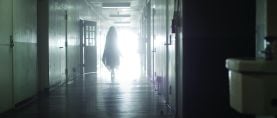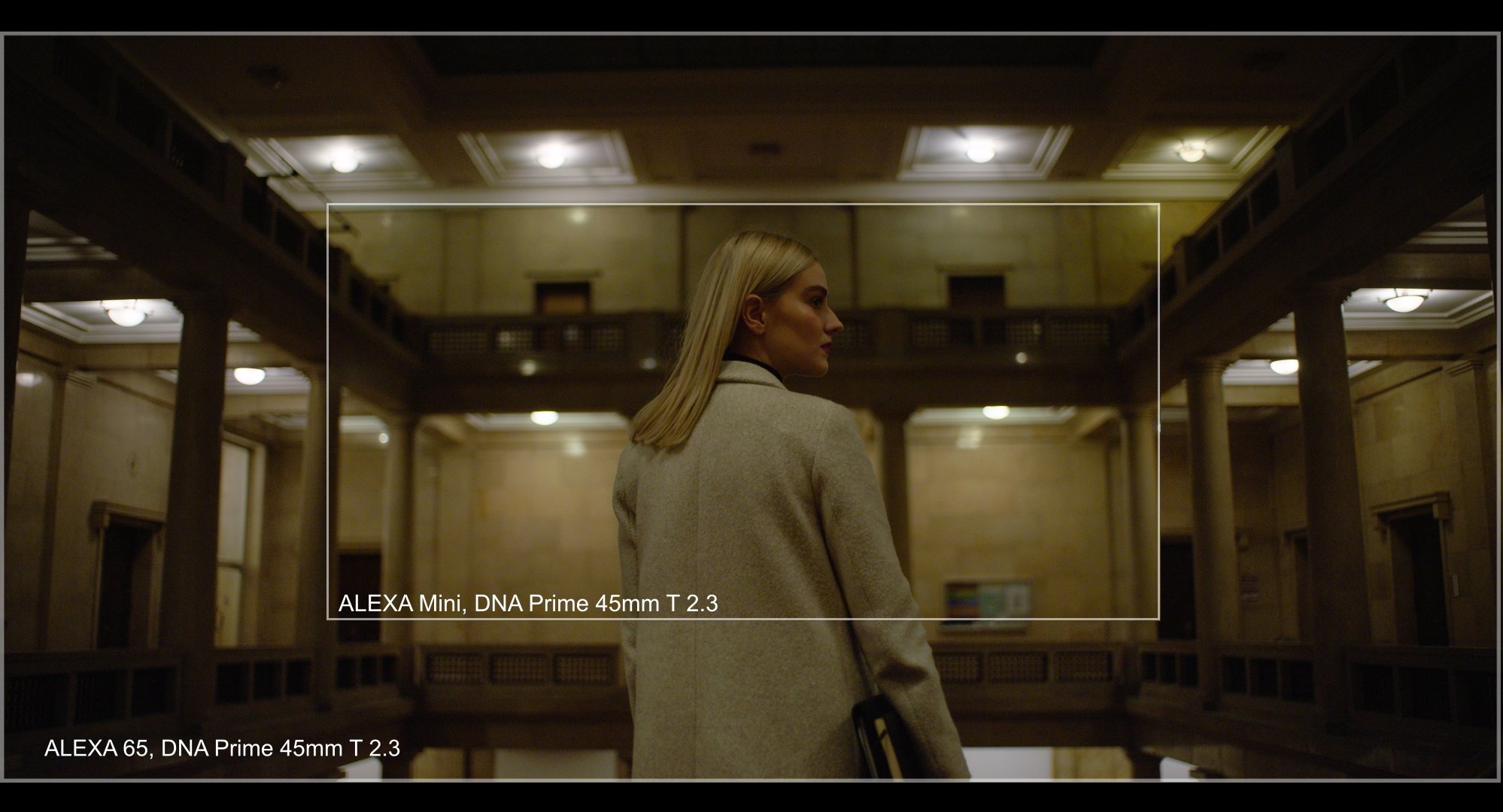
Large-Format Cinematography — A Close-Up
Shooting “large format” is one of the most popular current trends in cinematography, but there are quite a few misconceptions about LF and its usage.
Camera-test images courtesy of Manuel Lübbers
Large format is one of the most popular current trends in cinematography. It’s a hot option for filmmakers, but there are quite a few misconceptions about the format and its usage. While the aim of this installment is to clear up as many of these as we can, nothing beats understanding a concept better than seeing the results.
Demonstrating the misconceptions about larger formats is a complex and expensive exercise to set up — but fortunately, Munich-based cinematographer Manuel Lübbers has already done it for us. I initially learned of Lübbers’ test via a Facebook post by M. David Mullen, ASC — who praised Lübbers’ work — and I was extremely happy to find the examples that we’ve referenced on the following pages. Lübbers conducted this test as his thesis work at University of Film and Television (HHF) Munich, using a stereoscopic beamsplitter rig with an Alexa Mini and an Alexa 65.
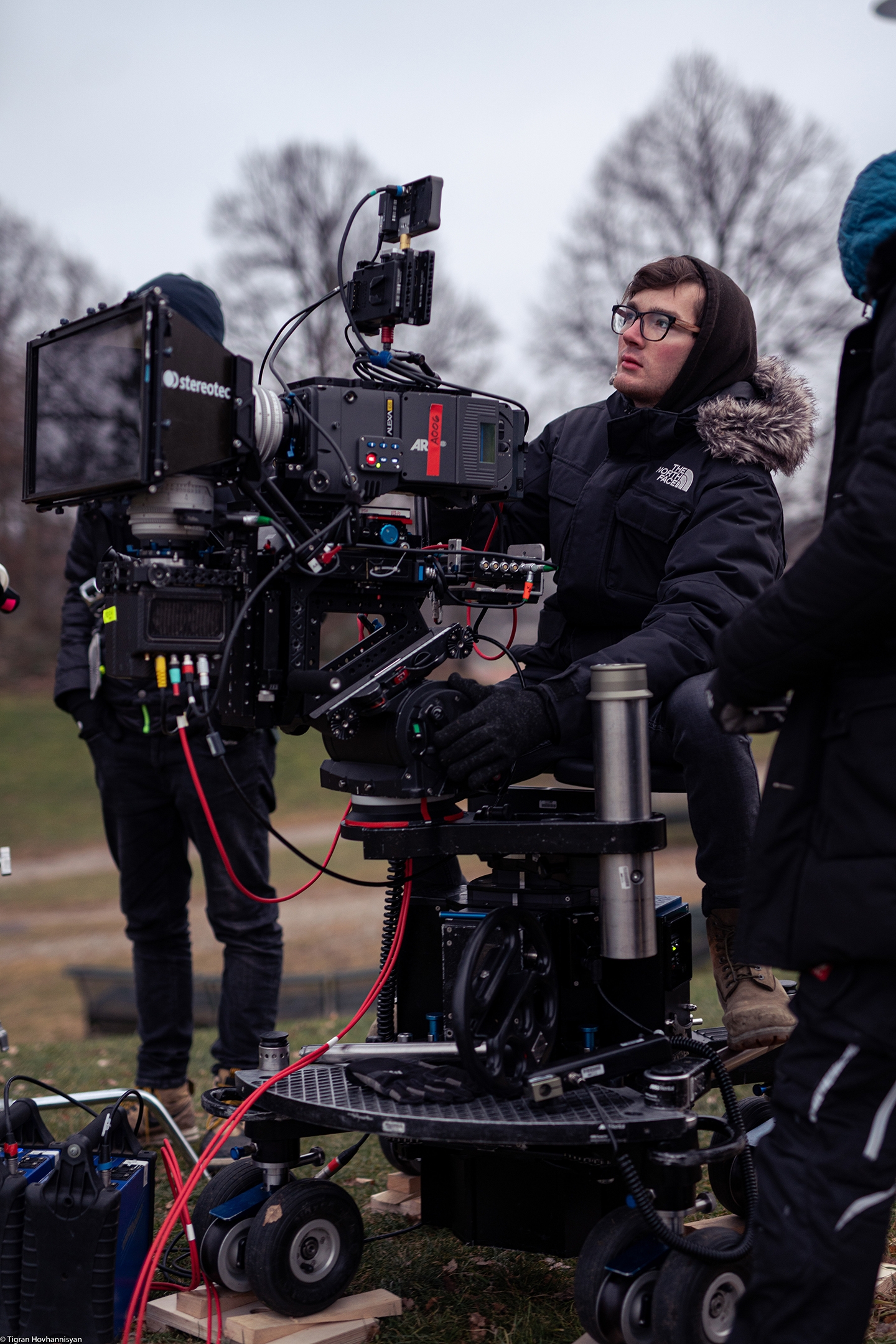
These tests prove, beyond a doubt, the true facts surrounding “large format.” Lübbers was generous enough to share his results with AC to clearly illustrate the misconceptions and benefits of larger-format cinematography, and the results speak for themselves. (You can see his full test here.)
The following is a breakdown of the issues.
1. “Large Format”
Let’s start with a biggie: “Large format” isn’t large format.
In photographic terms, “large format” is actually a retronym that dates back to the very origins of photography. Early photography was captured on photosensitive metal plates, paper and negatives in very large sizes of 6"-8" on average.
The Kodak Brownie still camera, introduced in 1901, featured 120 film (allegedly so named because it was the 20th attempt to make roll film), which we now refer to as “medium format.” This format ranges from 56mm x 41.5mm to 56mm x 224mm!
In the early 1920s, Leica’s Oskar Barnack invented the 135 still-camera format, taking 35mm cine film and turning it 90 degrees to run horizontally through the camera at 8 perforations per image and creating the 24mm x 36mm frame. This became the standard “full format” option (also a retronym coined after economical crop-format cameras were introduced), which still exists as a standard today. Larger photographic plates beyond this sizing became known as medium or large format.
This means that we have cinema Super 35mm at 18mm x 24mm, roughly; “full format” at 24mm x 36mm; 70mm at 52.5mm x 23mm; and the largest cinema format ever commercially produced, Imax, at 51.638mm x 70.739mm — none of which even come close to the largest medium format still film, let alone large format.
“Large format” cinematography refers to anything larger than Super 35mm, including the “giant” formats of 70mm and Imax, but it is an unfortunate misnomer — and, quite simply, incorrect.
The commonly used cameras today include the Arri Alexa 65, Alexa LF and Alexa LF Mini; Canon C500 MKII and C700 FF; Panavision DLX2; Sony Venice; and Red Monstro VV.
Nonetheless, “large format” has become a popular term for digital motion-picture cameras featuring an imager larger than Super 35mm.
“Experimentation with larger-format cinema negative is as old as the motion-picture industry itself.”
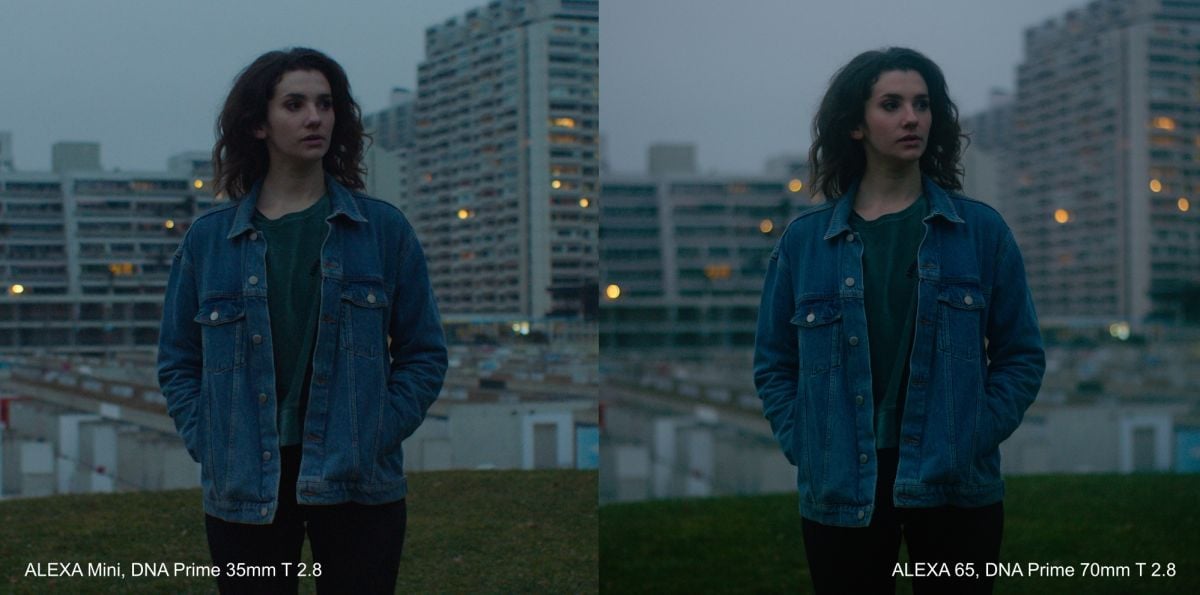
2. New Again
The notion that imagers larger than Super 35mm are new to cinematography is empirically wrong. Experimentation with larger-format cin-ema negative is as old as the motion-picture industry itself. As early as 1897, Enoch J. Rector exhibited Veriscope, a 63mm-wide film stock that captured a famous boxing match. We’ve had several waves of experimentation with larger film sizes, including more than a dozen formats that debuted during the 1920s and ’30s, and, of course, those that appeared during the widescreen wars of the 1950s.
What we now call “full format” (based on the 24mm x 36mm 135 still-camera format) was called VistaVision when it was introduced in 1954 as Paramount’s widescreen answer to Fox’s CinemaScope format (based on a 1921 patent and a conversion of a 1926 “Natural Color” camera).
VistaVision was first used on the 1954 holiday movie White Christmas (photographed by Loyal Griggs, ASC) and was then famously adopted by Alfred Hitchcock on five films: To Catch a Thief, The Trouble With Harry, The Man Who Knew Too Much, Vertigo and North by Northwest (all photographed by Robert Burks, ASC).
3. Reverse Crop Factor
Another misconception is that formats larger than Super 35mm change the focal length of all your lenses to wider focal lengths. This is, emphatically, untrue. The focal length of a given lens never changes, regardless of what format it’s used on. There’s an oft-repeated phrase in optics: “A 50 is a 50 is a 50.”
Now it is true that the angle of view of a given focal-length lens changes depending on what format it is used with. A 50mm lens on a 65mm camera is a wide lens. A 50mm lens on a Super 8mm camera is a very long lens. This means that for a given field of view, or a given composition and subject size, you’re likely using a longer focal-length lens on a larger-format camera than you would on a Super 35mm camera, because the focal-length lenses you’re used to in Super 35mm will have a wider angle of view on the larger-format imager. The focal length of the lens remains the same, however. Focal length is the measurement of the optical center of the lens to the imaging plane when the lens is focused at infinity — and it never changes, unless you’re using a zoom lens.
This holds true no matter what format the lens was designed for. So, regardless of whether you take a 50mm lens designed for a 65mm camera and put it on a Super 8mm camera (if you could), or take a 50mm lens actually designed for that Super 8mm camera, their angles of view will still be identical.
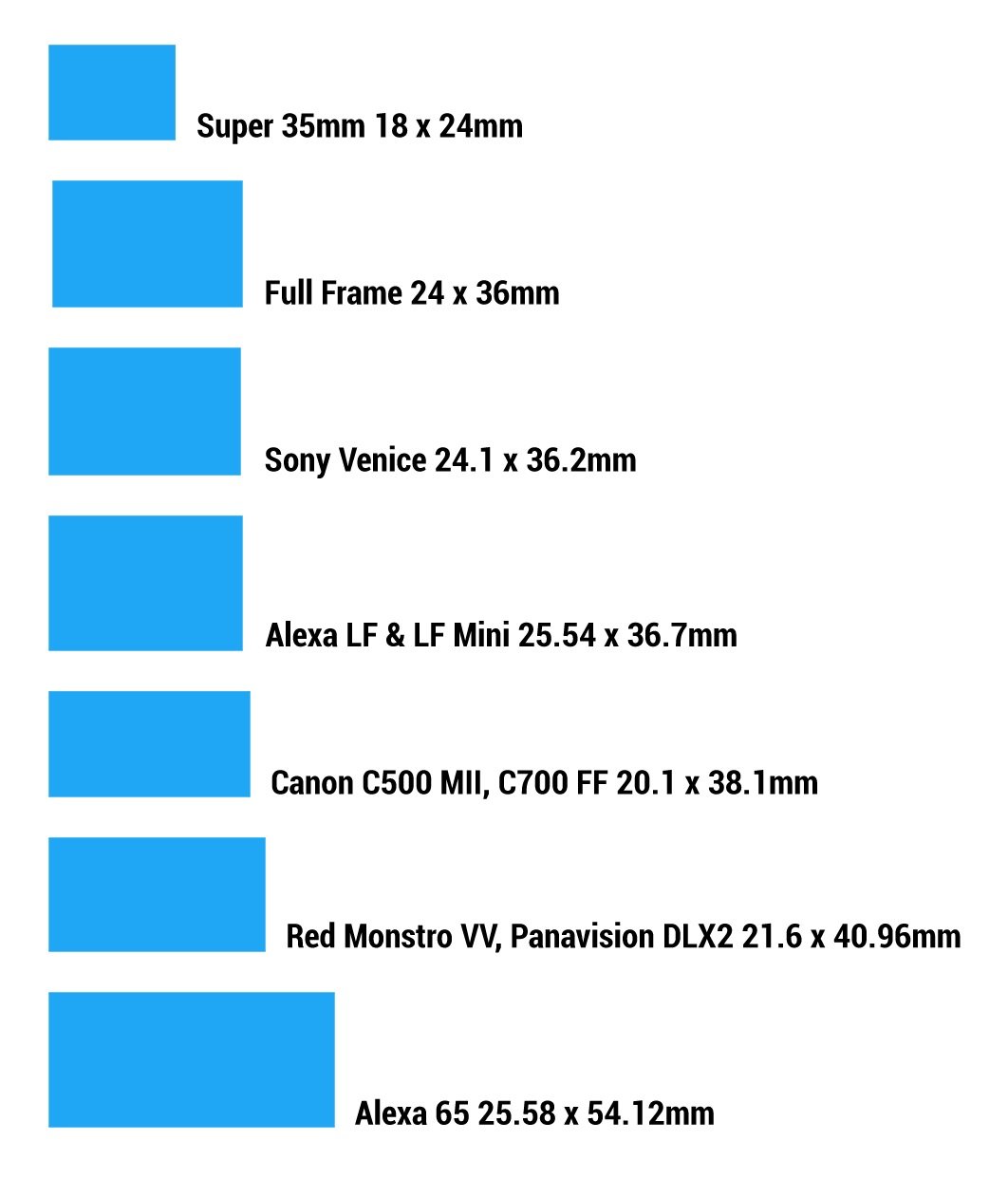
4. Image Compression
As is written in many textbooks and widely believed, longer lenses lead to more subject-to-background compression in the image, and wider lenses lead to less compression and more exaggeration of the separation between subject and background. And since larger-format sensors require longer focal-length lenses, larger-format capture gives better separation of your subject and the background, because you’re using longer lenses and introducing more compression. Again, this is incorrect. Image compression is not the result of the focal length of the lens; it is the result of the relative distance of the camera to the subject and the subject to the background. That’s it.
Let’s say you have a Super 35mm camera with a 50mm lens, set 10' away from a subject who is 20' away from the background, and you put a full-format camera right next to the first one, at the same distance from the subject and background. To match the angle of view, you’ll use a 100mm lens on the full-format camera. Both shots will have exactly the same image compression because the distance to the subject and the distance to the background is exactly the same. Merely changing to a longer focal length lens does not induce more image compression.
However, if you wanted to match the angle of view while using the same focal-length lens as the Super 35mm camera, then you would have to move the full-format camera closer to the subject. This change in the camera’s physical position would cause a change in image compression — and in this case, it would exaggerate the distance rather than compress it.
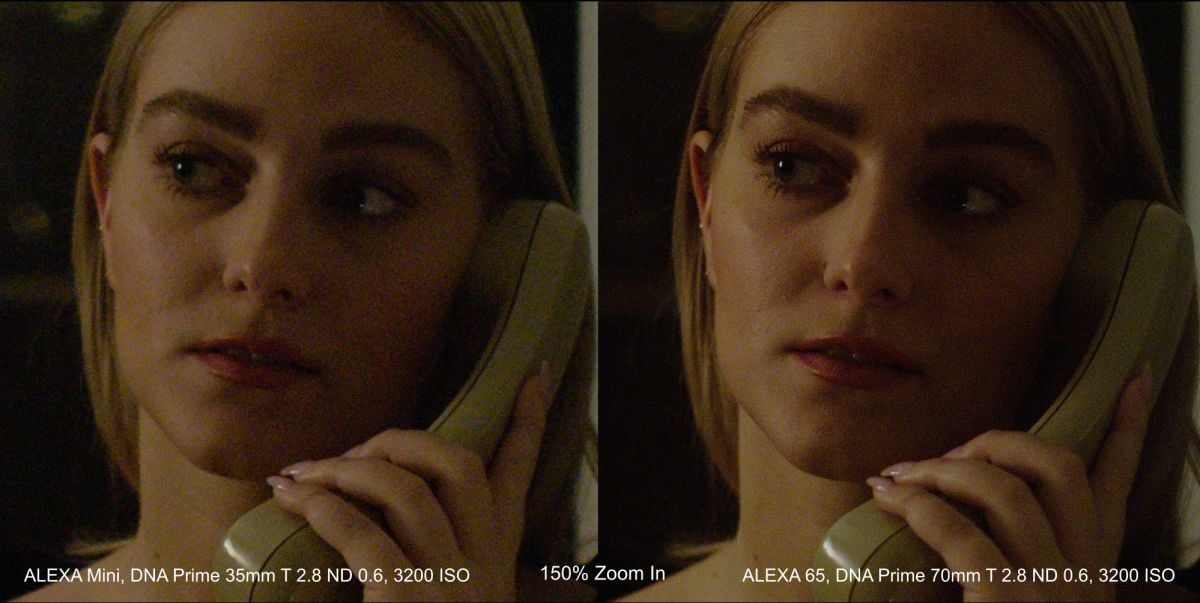
5. Depth of Field
It’s actually accurate to say that “large format” has less depth of field than Super 35mm. As discussed, when you’re shooting formats larger than Super 35mm, you’ll need longer focal-length lenses to achieve the same angles of view at the same distance to your subject. As you’re using longer lenses from the same distance and, ostensibly, at the same aperture, your depth of field is ¼ the distance that it is in Super 35mm. This happens with a doubling of focal length: your depth of field actually becomes 25% of what it was, as opposed to just half. So, yes, depth of field is considerably reduced in larger formats than Super 35mm.
6. Geometric Lens Distortion
This is somewhat true — because larger-format cameras use longer focal-length lenses for a given angle of view, and longer focal lengths generally have less geometric distortion (i.e., barrel or pincushion distortion) than shorter focal-length lenses. However, remember that the optical design of the lens must feature a larger image circle to cover the larger-format imager, so creating a larger image circle can in-duce some geometric distortion — especially for cameras with the limitation of a PL lens mount. The LPL mount, which has a larger throat diameter, can allow for wider angles of view, larger image circles and less distortion. So while this belief may be true, it is highly dependent on the lens itself, and not a steadfast rule.
7. Noise
The signal-to-noise ratio of larger imagers is often better than that of smaller imagers. This is a matter of physics, in that larger imagers will either have more photosites to capture more samples, or larger photosites that capture more photons of light. However, these variables are highly dependent on the manufacturer’s design of their sensor technology, the base ISO, and exposure methodology. But within a sin-gle manufacturer’s line of cameras, all else being equal, the larger imager will often have less noise than a smaller one.
8. Cropability
Because you’re working with a larger image area — and, generally, a higher photosite count — it’s also possible you’ll have greater image area for stabilization, reframing, “look around,” or even cropping in on the sensor to get a different field of view from a given lens.
As the sensor gets larger, so must the projected image circle from the lens in order for it to cover the larger image area. This places a limitation on the available lenses. Yet, as the focal length of a lens increases in a given series, the image circle also increases, so it is possible that even lenses designed for Super 35mm or Academy 35mm will cover larger-format imagers with the longer focal lengths in the series, or the longer focal lengths on a zoom. Below, however, are some of the available lenses specifically designed for larger-format cameras.
Spherical Primes:
Angénieux Optimo Prime
Arri DNA LF
Arri Prime 65 S
Arri Prime DNA
Arri Prime 65
Arri Signature Prime
Arriflex 765
Canon CN-E
Canon K-35
Canon Sumire Prime
Cooke S7/i
Cooke Double Speed Panchro
Cooke Duopanchro
DZOFilm Vespid Prime
IB/E Raptor
Irix Cine
Kinefinity Mavo
Laowa Zero-D
Leitz M 0.8
Leitz Primes
Leitz Thalia
Meike FF-Prime Cine
Nitecore Superior Prime Full
Frame Cinema
Panavision Panaspeed
Panavision Primo 70
Panavision Primo Artiste
Panavision Sphero 65
Panavision Super Panavision 70
Panavision System 65
Rokinon-Samyang Cine DS
Rokinon-Samyang Xeen
Schneider-Kreuznach Xenon FF
Servicevision UltraScorpio 70
Super FF
Sigma Cine FF Classic
Sigma Cine FF High Speed PrimeÆ
Spirit Lab Prime Al
Spirit Lab Prime Ti
Todd-AO CineSpace 70
Tokina Cinema ATX
Tokina Cinema Vista One
Tokina Cinema Vista Prime
Tribe7 Blackwing7
Vantage One4
Zeiss Compact CP.2
Zeiss Compact CP.3
Zeiss Supreme Prime
Spherical Zooms
Angénieux EZ
Arri Signature
Fujifilm Premista
Laowa Ooom
Leitz Full Frame Cine
Panavision Primo 70
Sigma FF
Todd-AO
Tokina Cinema ATX
Tokina Cinema Vista
Zeiss CZ.2
Anamorphic Primes
Caldwell Photographic Chameleon
Cooke Anamorphic /i Full Frame
Plus
Glaswerk One
JDC Xtal Xpress
P+S Technik Technovision 1.5x
Panavision Ultra Panatar 1.25x
Panavision Ultra Vista 1.65x
Scorpiolens 2x Full Frame
Scorpiorama 70 1.65x Full Frame
Todd-AO
Hawk 65
Hawk 65 Vintage ’74
Xelmus Apollo Full Frame
Anamorphic Zooms
P+S Technik Technovision 1.5x
Spirit Labs Pure First
Jay Holben is an ASC associate member and AC’s technical editor.
You’ll find all Shot Craft posts here.
